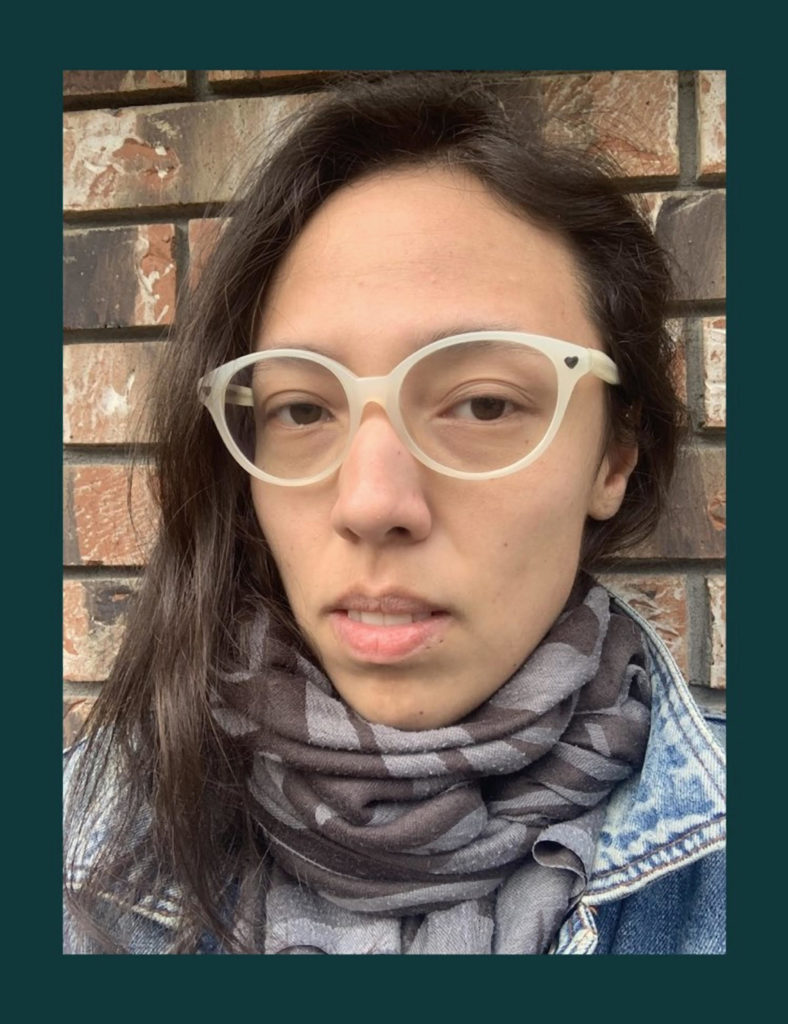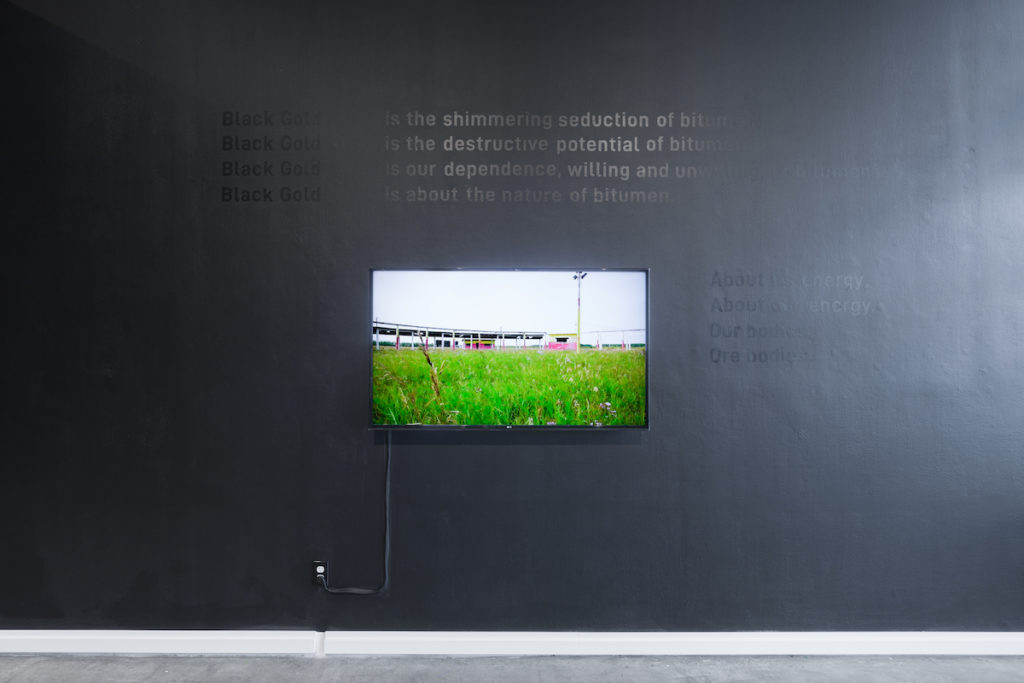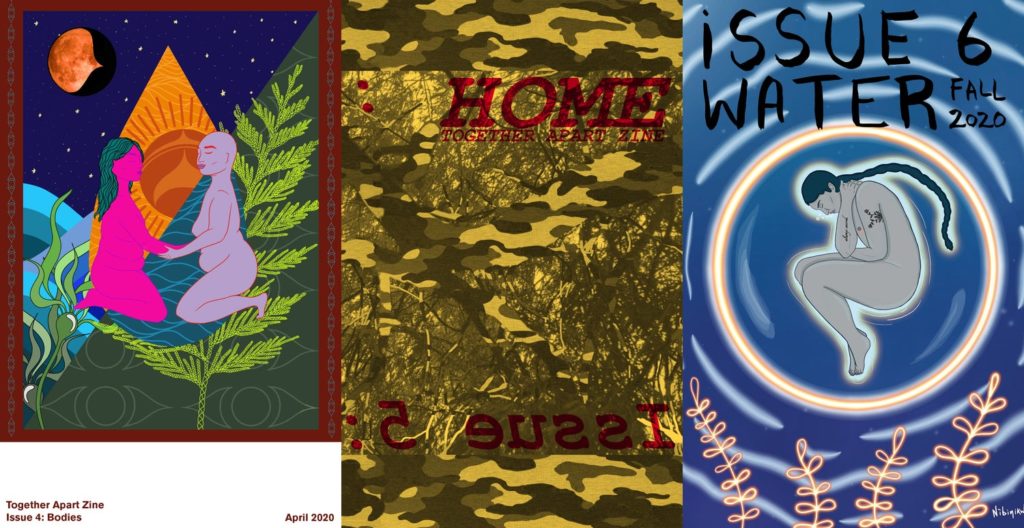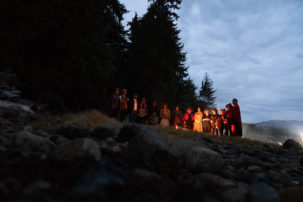AH: So, you started off at grunt as an intern curator, and now coming into the position of curator shows the gallery’s dedication to support and mentor emerging voices. What was the progression like for you coming into this role and what does that kind of mentorship mean to you?
WH: The longer I’ve been at grunt and the more I’ve heard about how other folks began there, it’s a very similar story for all of us in that we’ve usually been brought in through smaller contracts. I initially started with a contract to curate the Spark: Fireside Artist Talks series and then from that, they were like, “We like working with you. We’re going to figure out some ways to bring you in.” And within a month, they applied for the Early Career Development grant from the BC Arts Council and for funding with the city to do the Together Apart Queer Indigeneities symposium.
Right from the start, I felt like they were invested in having me there, it’s a really supportive place. Having been there during the transition while Glenn [Alteen] was getting ready for retirement and handing off the program director position to Vanessa [Kwan], it was wonderful to witness because there was so much care put into that.
I’m still learning though. I’m trying to get out of the habit of asking permission for everything and recognizing that I also have agency. I feel like it was a slow progression over the last three years, of them convincing me that they want me [laughs].
AH: Your artistic practice is so multifaceted and diverse. Does your practice have an effect on how you view curation and stepping into curatorial roles?
WH: It’s been a positive effect. The advantage of having worked as an artist more than as a curator means that I got to work with other curators. I had the opportunity to see how they operate and pick out the things that I enjoyed about working with certain people, and then try to replicate it. Also, once you’re in the space and talking about how art is going to fit on the walls, it’s just easier to navigate when you have practical knowledge because you’ve done it yourself. I love working with artist-curators.
AH: It seems that relationality is central to your curatorial practice. The way you’re grounded in building and maintaining relationships within community is so prominent. What kind of community outreach programs are you planning?
WH: The curator position at grunt relates to exhibitions, which are well established and the thing that we are most comfortable with planning. The Mount Pleasant Community Art Screen (MPCAS) is also shifting over to be more my responsibility. That’s where I see the most potential and flexibility in terms of what we can do going forward. We do a couple of different things, like commissioning works. We also have curatorial terms with folks like Justin Ducharme, who just finished his. Bringing people in, in that way, is something that I’m looking forward to, especially as someone who doesn’t particularly work a lot with digital media.
Then we’re waiting to hear back on funding for another Together Apart project. We’ve basically applied to have an Indigenous writer do a pilot episode of a narrative podcast. We’re trying to work more on our accessibility and anti-oppressive practices. One part of that project is to have the writing done by Indigenous artists and then we do all the work to produce it, like scoring, actors, et cetera. We will also have someone do a descriptive transcription for hard of hearing and deaf audiences, and a tactile edition as another option. A big focus for us right now is trying to increase our accessibility options for people because the pandemic really highlighted deficiencies.
AH: How has the pandemic affected grunt gallery and what are some of the ways you hope to navigate it?
WH: We have an accessibility committee, which is mostly organized by Kay Slater, our exhibitions manager. They do a lot of amazing community work around accessibility, like a Queer ASL (American Sign Language) program, which grunt partook in. The staff did that together—we completed the first level of it. We’re also expanding into offering community workshops and programming for captioning so that not only are we learning it internally, but we’re offering it to the community as well. We now have funding to do those captioning workshops, which is actually better funded than our exhibitions program at the moment.

 Whess Harman. Courtesy grunt gallery.
Whess Harman. Courtesy grunt gallery.
 Tsēmā Igharas, Black Gold, 2021. Installation view. Courtesy grunt gallery.
Tsēmā Igharas, Black Gold, 2021. Installation view. Courtesy grunt gallery.
 Grunt Gallery, Together Apart Zine, 2020. Issues 4–6. Courtesy the gallery.
Grunt Gallery, Together Apart Zine, 2020. Issues 4–6. Courtesy the gallery.







